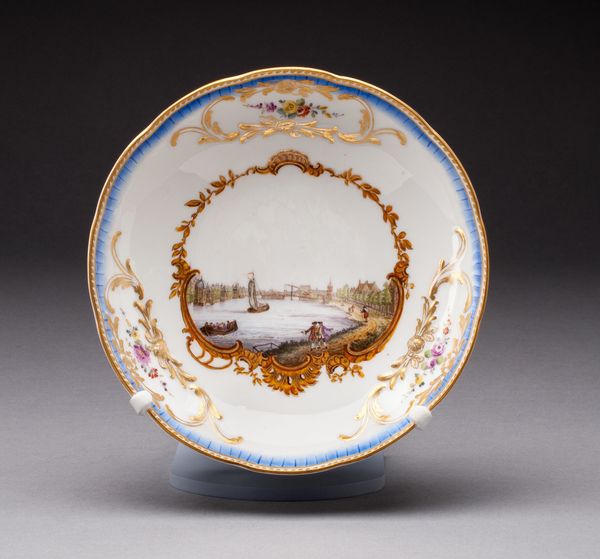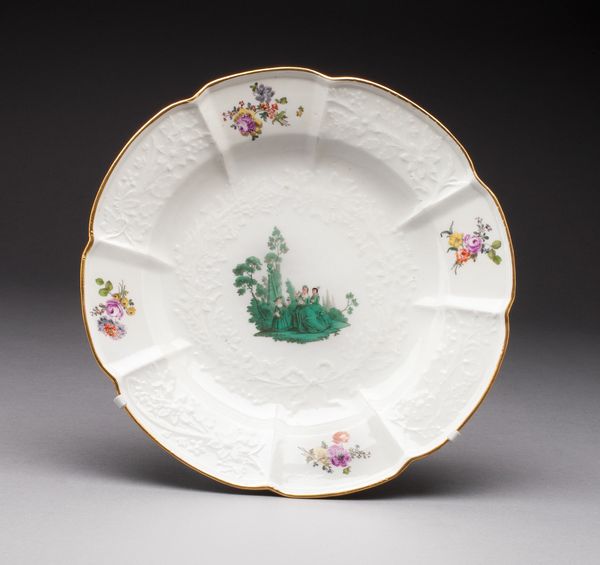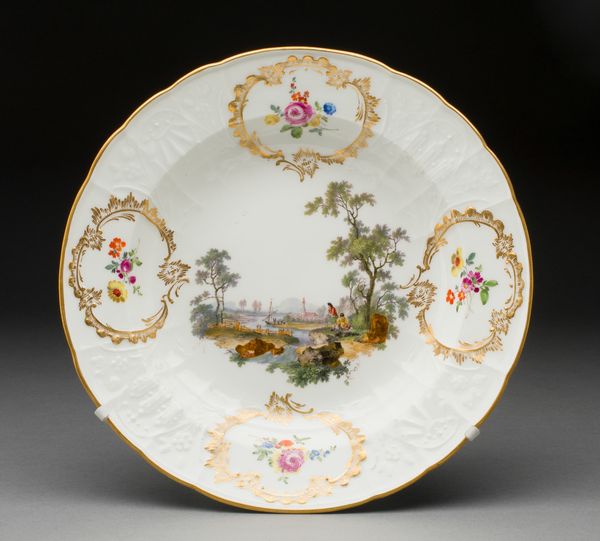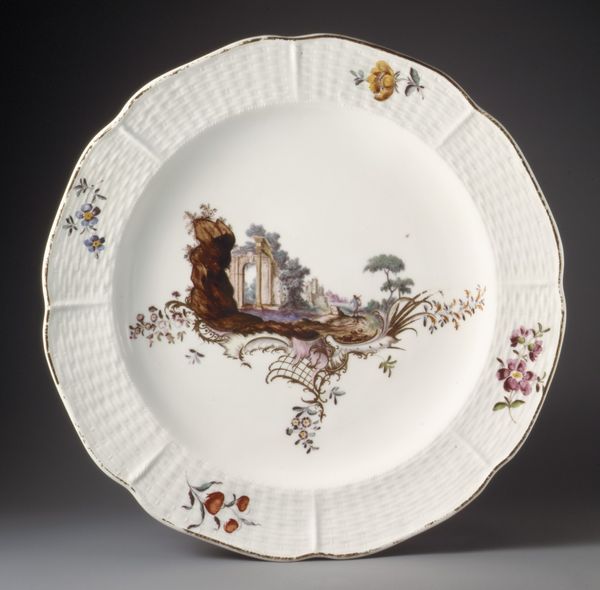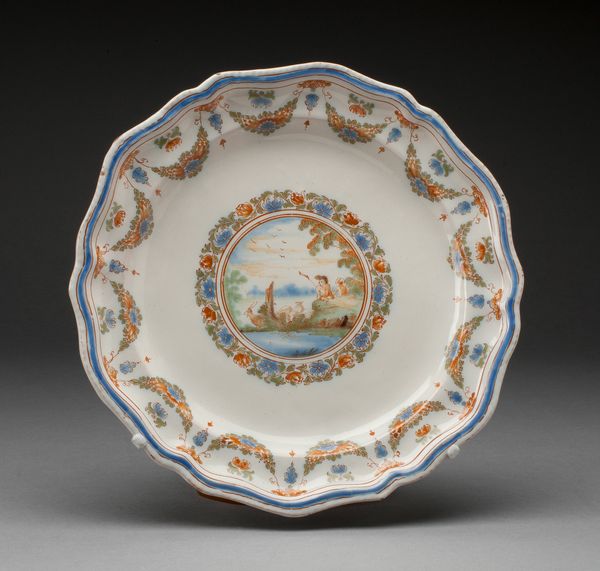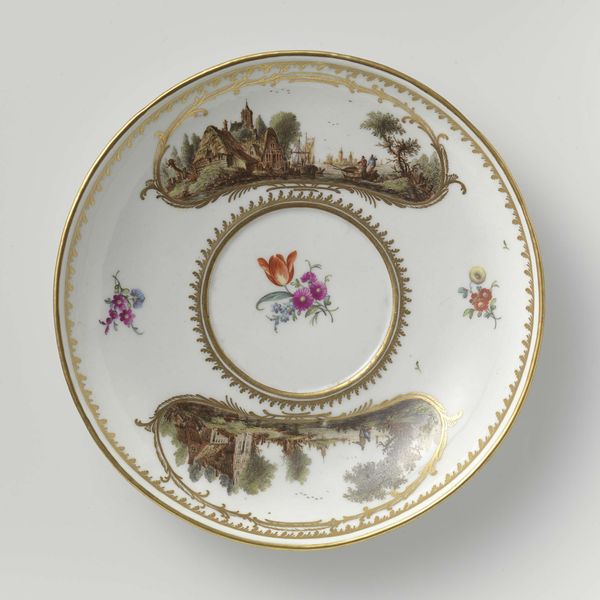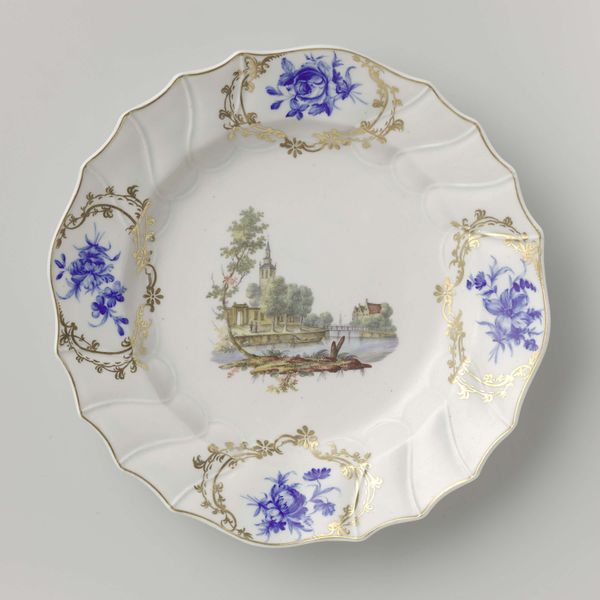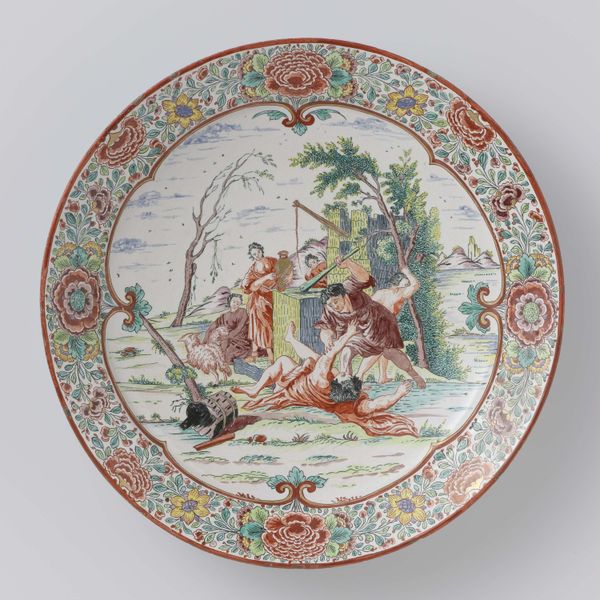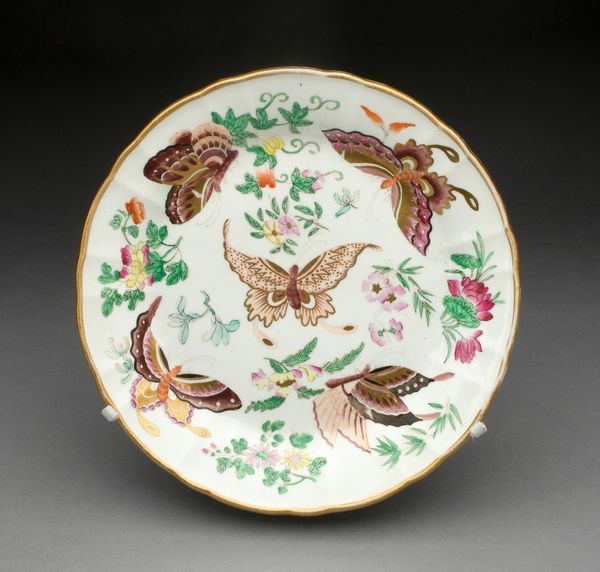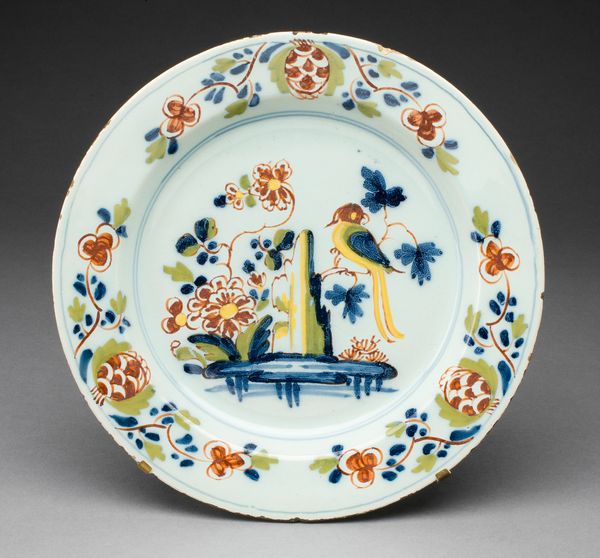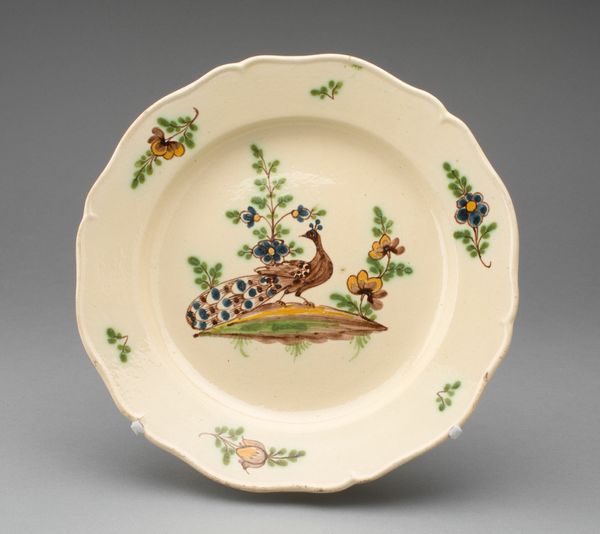
painting, ceramic, porcelain
#
painting
#
asian-art
#
landscape
#
ceramic
#
porcelain
#
culinary art
#
vessel
#
orientalism
#
ceramic
#
decorative-art
#
miniature
Dimensions: Diam. 8 3/4 in.
Copyright: Public Domain
Editor: Here we have a Chinese “Dinner Plate,” dating from around 1796 to 1810. It’s porcelain with painted decorations and it lives here at the Art Institute of Chicago. I’m really struck by how it mixes landscape with these whimsical figures floating around the rim. How do you interpret this kind of juxtaposition? Curator: Well, the mixing of imagery is fascinating, isn't it? Considering the history of porcelain production and trade, particularly between China and Europe, we see that objects like these often functioned as sites of cultural exchange and negotiation. The landscape in the center echoes idealized, orientalist views, while the floating figures around the rim add a distinctly decorative element geared towards a European clientele. What does the plate itself suggest to you, beyond just being tableware? Editor: That it was meant for display more than eating, maybe? The landscape seems too precious. So you’re saying the figures around the rim are more Western in style? Curator: Perhaps "Western-influenced" is more accurate. The placement and style suggest an awareness of European decorative sensibilities, indicating that this piece likely catered to Western tastes. These objects helped construct a specific image of the "Orient" for European consumption. Do you see a potential for that image to reflect the socio-political relations between China and Europe during this time? Editor: Definitely, it seems like China may have been tailoring art towards their Western markets. Are the landscapes fabricated too, do you think, or were they real? Curator: Interesting question. While inspired by real landscapes, they were often romanticized and idealized, fulfilling European expectations of what the "Orient" should look like, thus emphasizing China's perceived exoticism. This plate reveals a lot about power dynamics and how cultures perceived each other. What have you gathered from it all? Editor: I hadn't really considered how the cultural exchange goes both ways - how the importing culture impacts the artist, or in this case the craftsman. That's an angle on history I hadn't quite grasped. Curator: Exactly, and that's what makes this such an enriching piece! It serves as a window into the past.
Comments
No comments
Be the first to comment and join the conversation on the ultimate creative platform.
